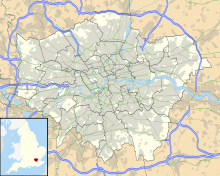
John Logie Baird was a Scottish inventor, electrical engineer, and innovator who demonstrated the world's first live working television system on 26 January 1926. He went on to invent the first publicly demonstrated colour television system and the first viable purely electronic colour television picture tube.

Soho is an area of the City of Westminster in the West End of London. Originally a fashionable district for the aristocracy, it has been one of the main entertainment districts in the capital since the 19th century.

Mayfair is an area in London, United Kingdom and is located in the City of Westminster. It is in Central London and part of the West End. It is between Oxford Street, Regent Street, Piccadilly and Park Lane and one of the most expensive districts in the world.

Natalie Jane Imbruglia is an Australian-British singer-songwriter and actress.
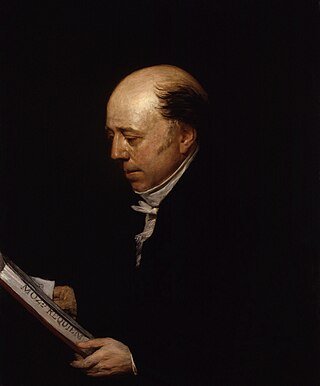
Vincent Novello, was an English musician and music publisher born in London. He was an organist, chorister, conductor and composer, but he is best known for bringing to England many works now considered standards, and with his son he created a major music publishing house.

Sir Samuel Romilly, was a British lawyer, politician and legal reformer. From a background in the commercial world, he became well-connected, and rose to public office and a prominent position in Parliament. After an early interest in radical politics, he built a career in chancery cases, and then turned to amelioration of the British criminal law.

Soho Square is a garden square in Soho, London, hosting since 1954 a de facto public park let by the Soho Square Garden Committee to Westminster City Council. It was originally called King Square after Charles II, and a much weathered statue of the monarch has stood in the square, with an extended interruption, since 1661, one year after the restoration of the monarchy.

Joseph Barney, was a British painter and engraver. He is usually described as a pupil of Antonio Zucchi and Angelica Kauffman and as a fruit and flower painter to the Prince Regent.
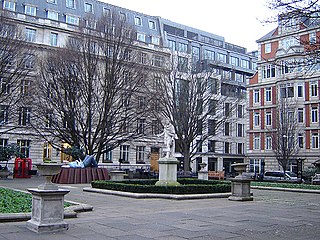
Golden Square, in Soho, the City of Westminster, London, is a mainly hardscaped garden square planted with a few mature trees and raised borders in Central London flanked by classical office buildings. Its four approach ways are north and south but it is centred 125 metres east of Regent Street and double that NNE of Piccadilly Circus. A small block south is retail/leisure street Brewer Street. The square and its buildings have featured in many works of literature and host many media, advertising and public relations companies that characterise its neighbourhood within Soho.

Dean Street is a street in Soho, central London, running from Oxford Street south to Shaftesbury Avenue. It crosses Old Compton Street and is linked to Frith Street by Bateman Street.
Greek Street is a street in Soho, London, leading south from Soho Square to Shaftesbury Avenue. The street is famous for its restaurants and cosmopolitan nature.
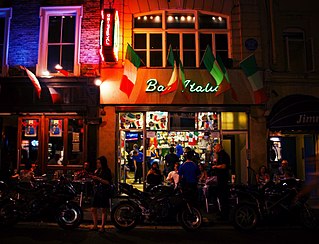
Bar Italia is an Italian café located on Frith Street in the Soho district of London.
Gary Clark is a Scottish musician, songwriter and record producer. As a performer he was the frontman of 1980s pop band Danny Wilson, mid-1990s rock band King L and member of Transister. Since the mid-1990s he has concentrated on songwriting and production.

Come to Life is the fourth studio album released by Australian singer-songwriter Natalie Imbruglia. It was initially released by Island Records on 2 October 2009, and later was the first album released on Imbruglia's self-funded label, Malabar Records.

John Phillips was an English artist and illustrator. He is perhaps best known as a satirical etcher.
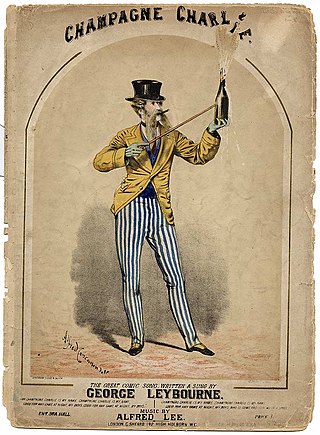
Alfred Concanen was, for over twenty-five years, one of the leading lithographers of the Victorian era, best remembered for his illustrated sheet music covers for songs made popular by famous music hall performers of the time. These covers usually featured portraits of the performers or humorous scenes from their songs. Sacheverell Sitwell said of him, "The most painstaking of the Pre-Raphaelites must fail beside Concanen!"

20 Frith Street is a building in the Soho district of London. It is located on the east side of Frith Street, close to the junction with Old Compton Street. The building which currently occupies the site of 20 Frith Street was built in 1858 by William Cooze to replace a house which dated from c1725, which itself may have replaced an even earlier building.

Ethel (Dolly) Kibblewhite (1873–1947) was the host of an important artistic and literary salon in London in the 1910s. The salon was held at her home at 67 Frith Street and presided over by the poet and critic T.E. Hulme.
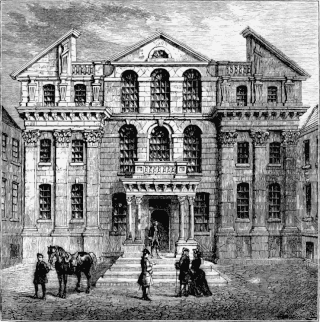
Monmouth House was a 17th-century mansion in Soho Square built for the Duke of Monmouth, the oldest illegitimate son of King Charles II. After the Duke's execution for attempting to lead a rebellion against the unpopular Catholic successor to Charles, James II, the house was owned by the Bateman family and loaned to various important people including the French ambassador before being demolished in 1773.
This is a list of the etymology of street names in the London district of Soho, in the City of Westminster. The following utilises the generally accepted boundaries of Soho viz. Oxford Street to the north, Charing Cross Road to the east, Shaftesbury Avenue to the south and Regent Street to the west.


